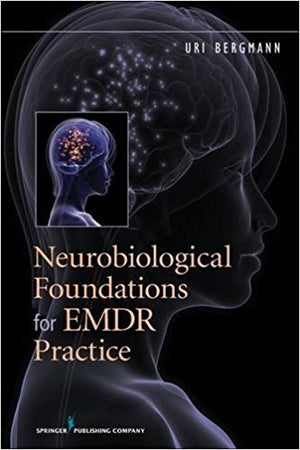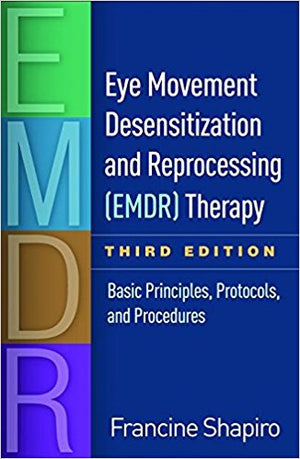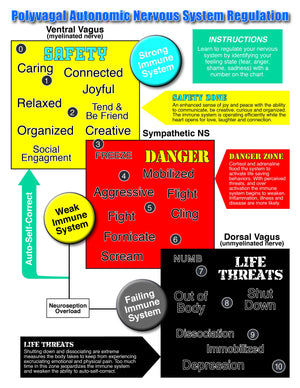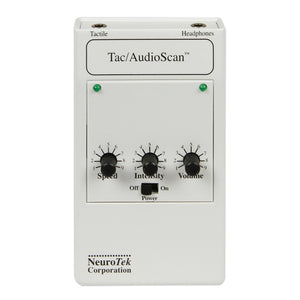{"id":11244878602,"title":"Neurobiological Foundations of EMDR by Uri Bergman","handle":"neurobiological-foundations-of-emdr-by-uri-bergman","description":"\u003cp\u003eThis volume introduces the most current research about the neural underpinnings of consciousness and EMDR (eye movement desensitization and reprocessing) in regard to attachment, traumatic stress, and dissociation. It is the first book to comprehensively integrate new findings in information processing, consciousness, traumatic disorders of information processing, chronic trauma and autoimmune compromises, and the implications of these data on the Adaptive Information Processing (AIP) model and EMDR treatment\u003c\/p\u003e\n\u003cp\u003eThe text examines online\/wakeful information processing, including sensation, perception, somatosensory integration, cognition, memory, language and motricity, and off-line\/sleep information processing, such as slow wave sleep and cognitive memorial processing, as well as REM\/dream sleep and its function in emotional memory processing. The volume also addresses disorders of consciousness, including coma, anesthesia, and other neurological disorders, particularly disorders of Type 1 PTSD, complex PTSD\/dissociative disorders, and personality disorders. It delves into chronic trauma and autoimmune function, especially in regard to diseases of unknown origin, and examines them from the perspective of autoimmune compromises resulting from the unusual neuroendocrine profile of PTSD sufferers. The final section integrates all material to illustrate the tenets of the AIP model and the implication of this material with respect to current EMDR treatment, as well as techniques to render it more robust\u003c\/p\u003e\n\u003cb\u003eKey Features:\u003c\/b\u003e\u003cspan\u003e\u003c\/span\u003e\n\u003cp\u003e \u003c\/p\u003e\n\u003cul\u003e\n\u003cli\u003eProvides a neurobiological foundation that informs our understanding of human development, disorders of attachment, and information processing\u003c\/li\u003e\n\u003cli\u003eExamines biological underpinnings of EMDR and other psychotherapeutic modalities regarding successful treatment outcomes for attachment, stress, and dissociation\u003c\/li\u003e\n\u003cli\u003eOffers the latest research in neurosciences relevant to attachment, traumatic stress, and dissociation\u003c\/li\u003e\n\u003cli\u003eExplicates disorders as outcomes of chronically dysregulated, evolutionarily based, biological action systems\u003c\/li\u003e\n\u003cli\u003eIllustrates EMDR's sensorial input to the brain as a neural catalyst that can facilitate repair of dysfunctional neural circuitry\u003c\/li\u003e\n\u003cli\u003eIncludes illustrative neural maps\u003c\/li\u003e\n\u003c\/ul\u003e","published_at":"2017-07-20T12:52:53-07:00","created_at":"2017-07-20T12:52:53-07:00","vendor":"Mentor Books West","type":"Book","tags":[],"price":5687,"price_min":5687,"price_max":5687,"available":true,"price_varies":false,"compare_at_price":null,"compare_at_price_min":0,"compare_at_price_max":0,"compare_at_price_varies":false,"variants":[{"id":44999380682,"title":"Default Title","option1":"Default Title","option2":null,"option3":null,"sku":"978-0826109378","requires_shipping":true,"taxable":true,"featured_image":null,"available":true,"name":"Neurobiological Foundations of EMDR by Uri Bergman","public_title":null,"options":["Default Title"],"price":5687,"weight":318,"compare_at_price":null,"inventory_quantity":-2,"inventory_management":null,"inventory_policy":"deny","barcode":"978-0826109378","requires_selling_plan":false,"selling_plan_allocations":[]}],"images":["\/\/mentorstorenow.com\/cdn\/shop\/products\/41Ezi5MBawL._SX331_BO1_204_203_200.jpg?v=1500580375"],"featured_image":"\/\/mentorstorenow.com\/cdn\/shop\/products\/41Ezi5MBawL._SX331_BO1_204_203_200.jpg?v=1500580375","options":["Title"],"media":[{"alt":null,"id":564274298983,"position":1,"preview_image":{"aspect_ratio":0.667,"height":499,"width":333,"src":"\/\/mentorstorenow.com\/cdn\/shop\/products\/41Ezi5MBawL._SX331_BO1_204_203_200.jpg?v=1500580375"},"aspect_ratio":0.667,"height":499,"media_type":"image","src":"\/\/mentorstorenow.com\/cdn\/shop\/products\/41Ezi5MBawL._SX331_BO1_204_203_200.jpg?v=1500580375","width":333}],"requires_selling_plan":false,"selling_plan_groups":[],"content":"\u003cp\u003eThis volume introduces the most current research about the neural underpinnings of consciousness and EMDR (eye movement desensitization and reprocessing) in regard to attachment, traumatic stress, and dissociation. It is the first book to comprehensively integrate new findings in information processing, consciousness, traumatic disorders of information processing, chronic trauma and autoimmune compromises, and the implications of these data on the Adaptive Information Processing (AIP) model and EMDR treatment\u003c\/p\u003e\n\u003cp\u003eThe text examines online\/wakeful information processing, including sensation, perception, somatosensory integration, cognition, memory, language and motricity, and off-line\/sleep information processing, such as slow wave sleep and cognitive memorial processing, as well as REM\/dream sleep and its function in emotional memory processing. The volume also addresses disorders of consciousness, including coma, anesthesia, and other neurological disorders, particularly disorders of Type 1 PTSD, complex PTSD\/dissociative disorders, and personality disorders. It delves into chronic trauma and autoimmune function, especially in regard to diseases of unknown origin, and examines them from the perspective of autoimmune compromises resulting from the unusual neuroendocrine profile of PTSD sufferers. The final section integrates all material to illustrate the tenets of the AIP model and the implication of this material with respect to current EMDR treatment, as well as techniques to render it more robust\u003c\/p\u003e\n\u003cb\u003eKey Features:\u003c\/b\u003e\u003cspan\u003e\u003c\/span\u003e\n\u003cp\u003e \u003c\/p\u003e\n\u003cul\u003e\n\u003cli\u003eProvides a neurobiological foundation that informs our understanding of human development, disorders of attachment, and information processing\u003c\/li\u003e\n\u003cli\u003eExamines biological underpinnings of EMDR and other psychotherapeutic modalities regarding successful treatment outcomes for attachment, stress, and dissociation\u003c\/li\u003e\n\u003cli\u003eOffers the latest research in neurosciences relevant to attachment, traumatic stress, and dissociation\u003c\/li\u003e\n\u003cli\u003eExplicates disorders as outcomes of chronically dysregulated, evolutionarily based, biological action systems\u003c\/li\u003e\n\u003cli\u003eIllustrates EMDR's sensorial input to the brain as a neural catalyst that can facilitate repair of dysfunctional neural circuitry\u003c\/li\u003e\n\u003cli\u003eIncludes illustrative neural maps\u003c\/li\u003e\n\u003c\/ul\u003e"}













